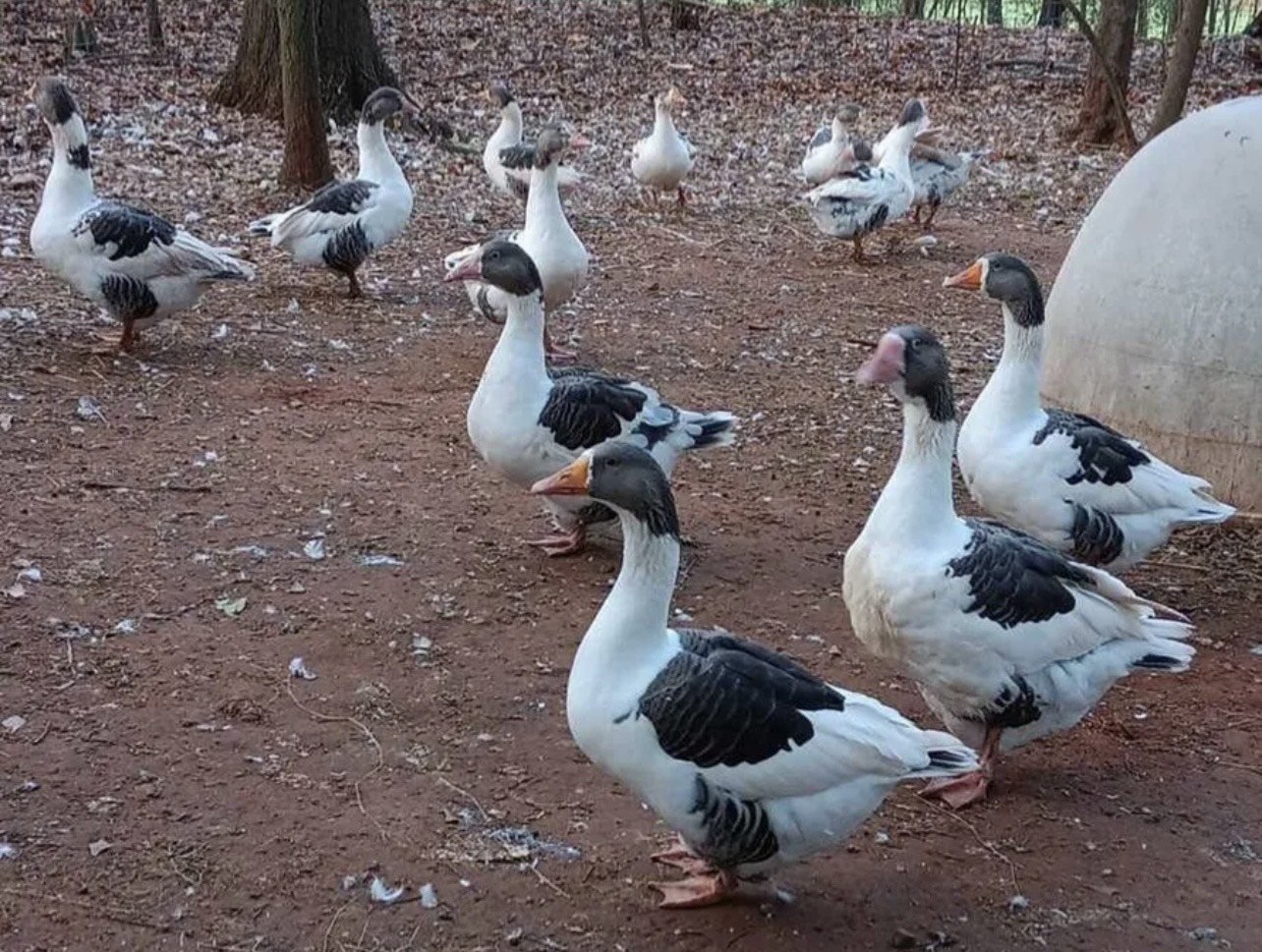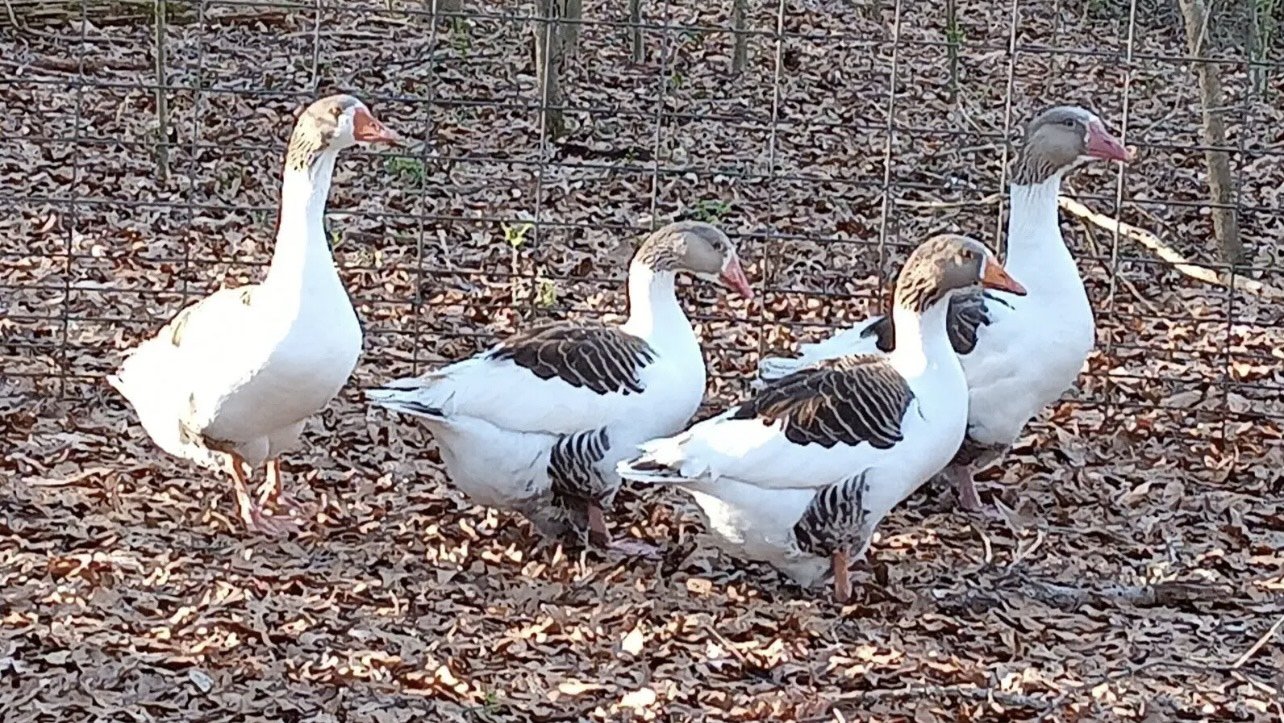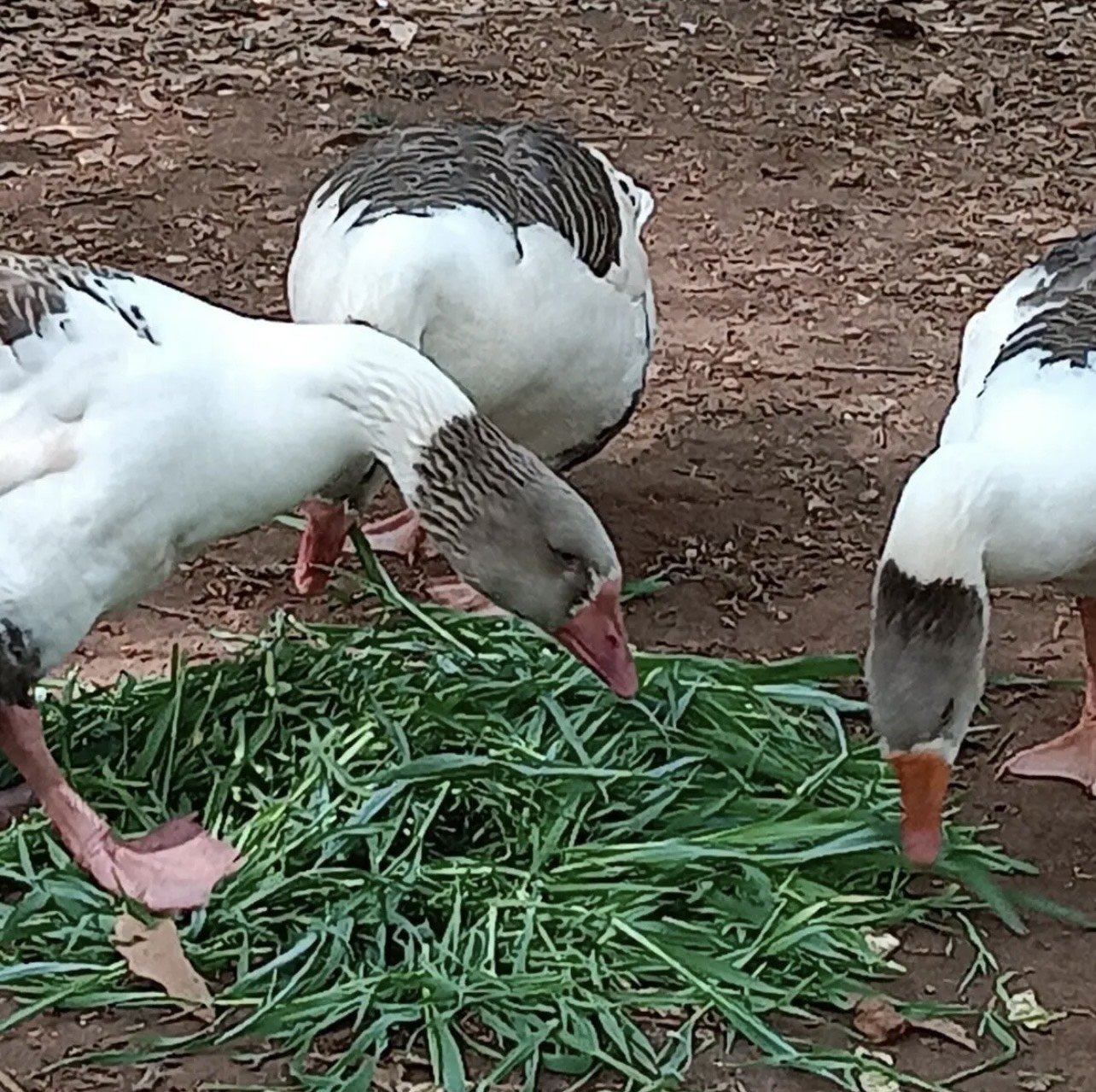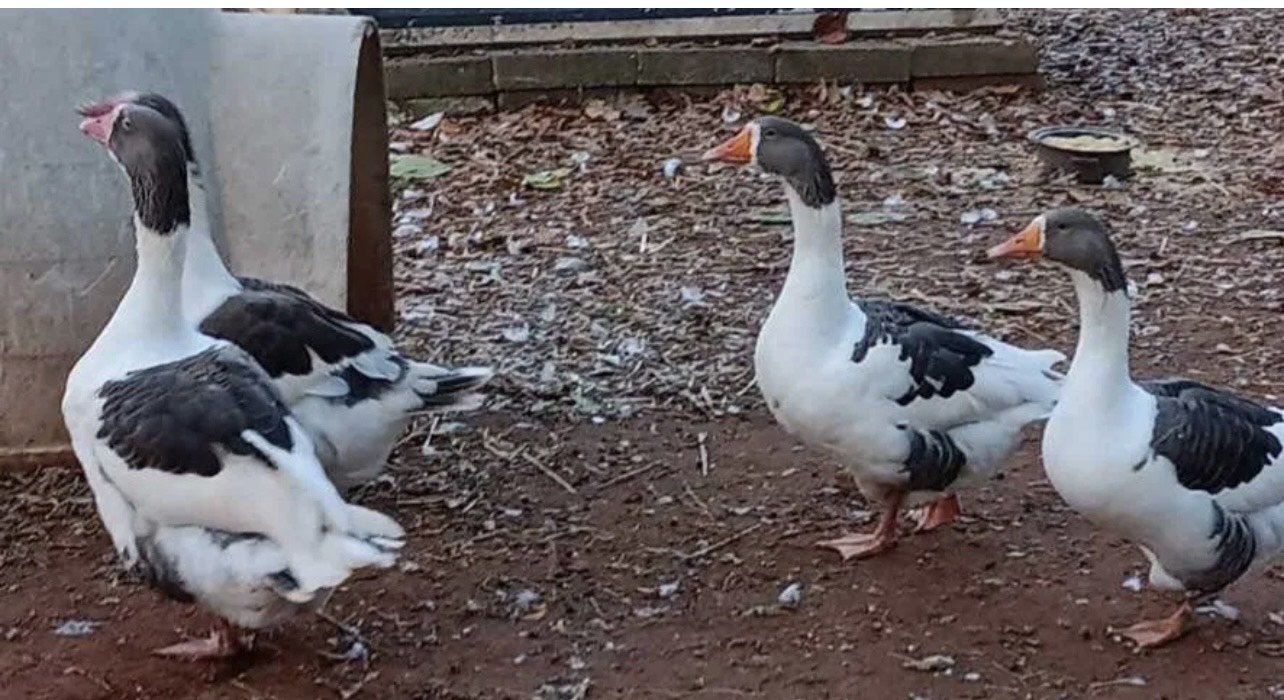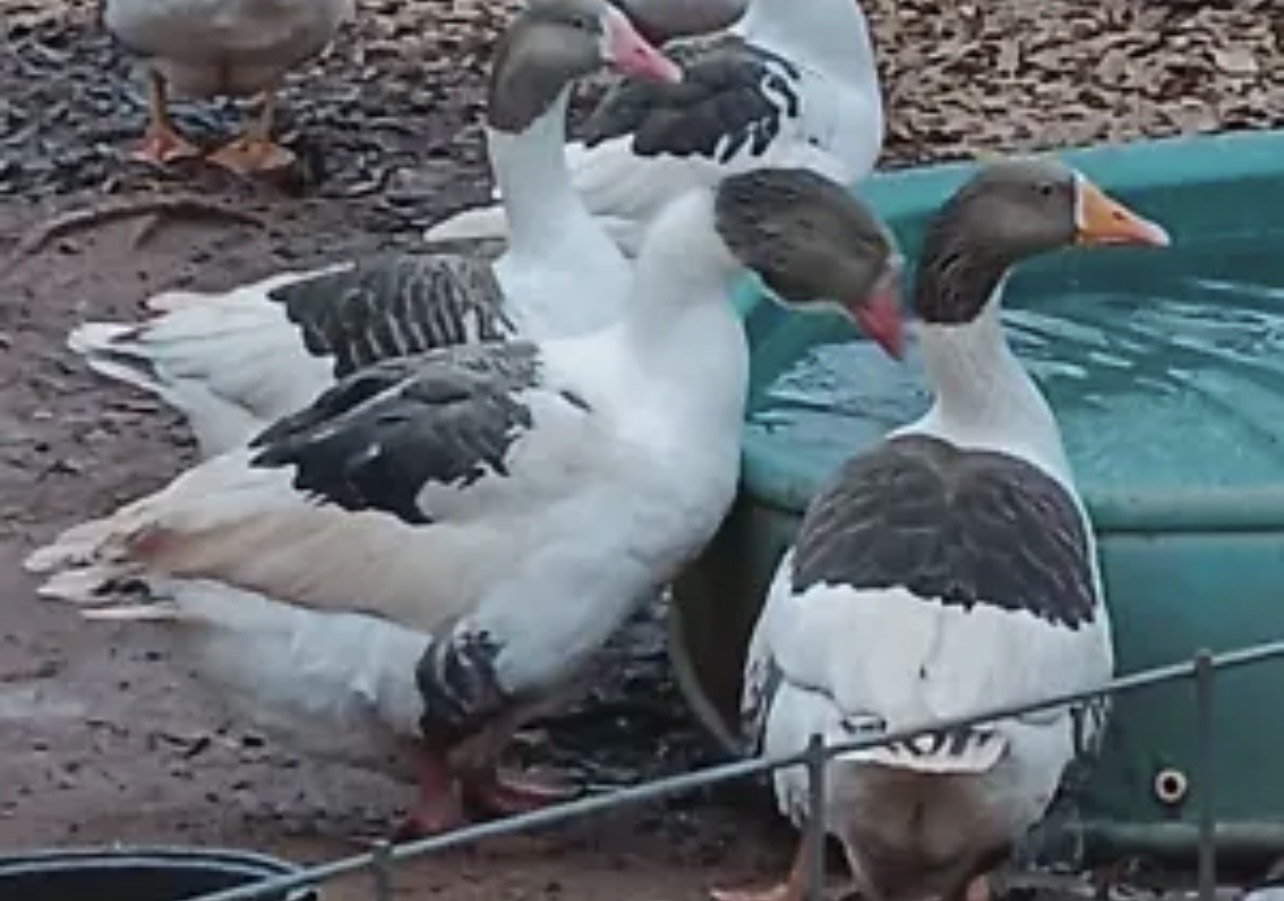Natural Born Guardians
Livestock Guardian Dogs for the Farm and Family
Saddleback Pomeranian Geese
The beautiful Saddleback Pomeranian goose was a natural choice for both its utilitarian use and beautification of a Homestead Farm. Choice Genetics were difficult to source for their clear distinctive patterning as well as health size structure and other attributes. Not that different than the selective processes that go into sourcing and selecting the Turkish Boz Shepherds that guard them. A flock Of Saddleback Pomeranian Geese out in a green field are a sight to pause and take in. Not to mention the eggs, meat and function of weeding they provide.
Saddleback Pomeranian geese are a distinctive breed known for their striking appearance and versatile characteristics. Here's an overview:
Origin: Saddleback Pomeranian geese originated in Pomerania, a region that spans parts of modern-day Germany and Poland. They are believed to have been developed from indigenous breeds of geese found in the area, with contributions from other breeds such as the White and Graylag geese.
Appearance: These geese are named for their unique saddle-shaped markings, which are characterized by a white patch on the upper back and neck area against a darker base color. The base color can vary but is typically gray or brown. They have a medium-sized, well-proportioned body with an upright stance. Saddleback Pomeranian ganders (males) and geese (females) generally exhibit similar markings.
Temperament: Saddleback Pomeranian geese are known for their docile and friendly disposition, making them popular among hobbyists and small-scale farmers. They can be relatively calm and sociable, especially if raised with regular human interaction from a young age. However, like all geese, they may exhibit protective behavior, particularly during the breeding season.
Utility: These geese are valued for both their meat and egg production capabilities. They typically have good growth rates and can produce flavorful, lean meat. While not as prolific egg layers as some other breeds, they still lay a respectable number of eggs each year, which are often large and have a rich flavor.
Housing and Management: Saddleback Pomeranian geese can adapt well to various housing and management systems, including free-range, pasture-based, or backyard setups. They require access to clean water for drinking and bathing, as well as adequate shelter from predators and adverse weather conditions. Providing ample space for grazing and foraging is beneficial for their physical and psychological well-being.
Breeding: Breeding Saddleback Pomeranian geese involves selecting high-quality breeding stock with desirable markings, body conformation, and temperament. Care should be taken to avoid inbreeding and maintain genetic diversity within the population. Geese typically reach sexual maturity at around two years of age and can produce fertile eggs for hatching.
Conservation Status: Saddleback Pomeranian geese, like many traditional livestock breeds, have faced challenges due to the rise of industrial agriculture and the decline of small-scale farming. Efforts to conserve and promote these geese, along with other heritage breeds, play a crucial role in preserving genetic diversity and cultural heritage in agriculture.
Overall, Saddleback Pomeranian geese are prized for their distinctive appearance, gentle temperament, and suitability for small-scale farming and homesteading. Whether kept for meat, eggs, pest control, or simply as ornamental birds, they contribute to sustainable and diversified farming systems.
Pomeranian geese are not primarily known for their meat or egg production like some other breeds, but they can still be raised for these purposes on a small scale. Here's an overview of their meat and egg production:
Meat Production:
Pomeranian geese can be raised for meat, although they are not as fast-growing as some specialized meat breeds. However, their meat is known for its excellent flavor and texture.
These geese typically have a good feed conversion ratio, meaning they efficiently convert feed into meat.
While they may take longer to reach market weight compared to meat-specific breeds, they can still produce flavorful, lean meat.
It's important to provide a balanced diet and appropriate housing to ensure optimal growth and health.
Egg Production:
Pomeranian geese are not prolific egg layers compared to some other breeds, but they can still produce a reasonable number of eggs each year.
Their eggs are typically larger than chicken eggs and have a rich flavor, making them desirable for culinary purposes.
Egg production can vary depending on factors such as genetics, nutrition, and environmental conditions.
Providing nesting boxes or secluded areas for egg laying can encourage regular egg production.
Eggs should be collected regularly to prevent damage or soiling.
Management Considerations:
When raising Pomeranian geese for meat and egg production, it's important to prioritize their welfare and provide appropriate housing, nutrition, and veterinary care.
Access to clean water for drinking and bathing is essential for their health and well-being.
While these geese can adapt to various management systems, providing ample space for grazing and foraging can improve their overall health and productivity.
Breeding stock should be selected based on desirable traits such as temperament, conformation, and productivity.
Market Considerations:
Small-scale producers may find a niche market for Pomeranian goose meat and eggs, particularly among consumers who value high-quality, flavorful products.
Direct marketing through farmers' markets, specialty retailers, or online platforms can help connect producers with interested customers.
Emphasizing the breed's unique characteristics, such as its rich-flavored meat and large eggs, can help differentiate products in the marketplace.
While Pomeranian geese may not be as specialized for meat and egg production as some other breeds, they can still contribute to a diversified and sustainable farming operation, particularly for small-scale producers or hobbyists interested in raising heritage breeds.
